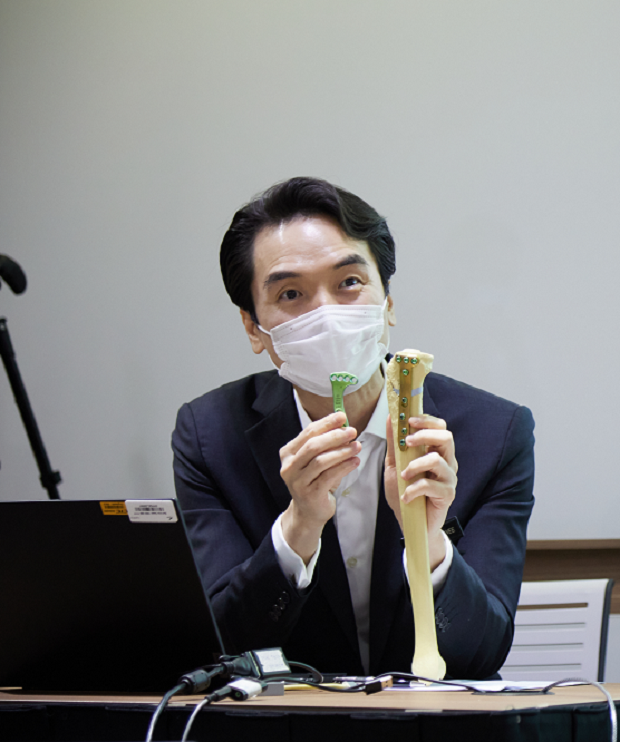
<< Dr Lee Kong Hwee likens preservation surgery to “an extension of the knee’s COE (Certificate of Entitlement)”, and the procedure to rebalancing of car tyres whose treads have become worn on one side after some time. With preservation surgery, or osteotomy, the weight of the body is shifted to the centre of the body instead of on one side. >>
For younger patients with knee osteoarthritis, new treatment options are available to preserve rather than replace the knees.
Painful arthritic knees are often linked to ageing, but osteoarthritis is increasingly affecting younger people.
A degenerative condition associated with knee malalignment, obesity and sports injuries, osteoarthritis is often treated by taking out the diseased knee bone and replacing it with an artificial part. Someone in his late 30s or early 40s, however, may need to undergo one or even two more replacements, as the artificial parts last at most 20 years.
To avoid having to undergo several replacements — and the possible infections and complications that come with repeated surgeries — younger patients with early arthritis can opt for knee preservation. This involves shaving a bit of the tibia (shin bone) and adding a bone graft to align and distribute the body weight across the whole knee. In arthritic patients, their body weight tends to shift to one side, causing pain and sometimes, bow legs.

“A preservation surgery not only addresses patients’ knee osteoarthritis problem, but may also help them delay or even avoid the need for a knee replacement surgery in the future,” said Dr Lee Kong Hwee, Consultant, Department of Orthopaedic Surgery, and Director, Sport Service, Singapore General Hospital (SGH).
Data show that 80 per cent of patients who had undergone a type of preservation surgery known as high tibial osteotomy (HTO) did not need a knee replacement 10 years after the surgery, Dr Lee added. “Should the arthritis advance for whatever reason, the patient can still go for a replacement; that bridge is not burnt,” said Dr Lee, who also spearheads SGH’s Knee Preservation Service, which was set up in 2019.
In Singapore, more than 10 per cent of adults suffer from knee osteoarthritis. At SGH, some 150 people have undergone knee preservation surgery from the start of the service to end-2021. A third of SGH’s knee osteoarthritis patients suffer from medial compartment osteoarthritis, where patients usually only feel pain in the inner part of the knee when the thigh and shin bones rub against each other. Wear-and-tear thins the cartilage, which no longer acts as a cushion at the joint.
HTO is one of the more common techniques used at SGH on younger patients, typically between 40 and 60 years of age. In this procedure, a wedge-shaped opening in the upper portion of the shin bone is made, then a bone graft wedge is inserted and secured with a titanium plate and screws to align the knee. Pressure is taken off the damaged portion of the knee joint, allowing the body weight to be distributed more equally on the knees.
Another method is proximal fibular osteotomy (PFO), which — because of the short recovery time required — can also be offered to patients older than 50 years, and those with severe skin dermatitis, poorly controlled diabetes and poor immunity.
In PFO, 2cm of the patient’s calf bone is removed to disconnect the support to the outer part of the knee, allowing for equal distribution of weight across the entire knee joint. Patients can walk after surgery and are discharged on the same day. Full recovery takes about two weeks.
Both HTO and PFO are less invasive, more precise and have a lower risk of infection than conventional knee replacement. HTO can be performed on patients whose knees are severely bent or curved, and correction is immediate. PFO is not recommended for patients whose knees are severely bent or curved, and correction is achieved gradually over a year.
Get the latest updates about Singapore Health in your mailbox! Click here to subscribe.













 Get it on Google Play
Get it on Google Play